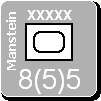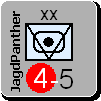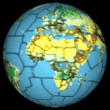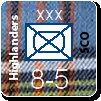Shannon V. OKeets
Posts: 22095
Joined: 5/19/2005
From: Honolulu, Hawaii
Status: offline

|
quote:
ORIGINAL: freeboy
Thanks, IT seems organized, BUT the conceipt I am having tropuble getting my head arround is the one where the sides actually have combat in a three month period, I guess it really is a ? of the stages or steps used... but if you are using htis alevel of detail, down to ships in hexes, seems like a jump to be able to model an ingagemnt and then the follow up engagements that navel combat had. Task forces fought at specific sites and then moved, when surface action took place. Several battles where at night and gave a prepared early war japanees navy a huge addvantage, see Savos, sp? battle. I guess those familiar with the system seem to like it or you would be going a differrent direction, and I am not saying you should , just it seems odd.
How many battles could two forces in say the gilberts have in one turn?/two month period in this game? Lets say there is limited land air but good sea supply if that even exits? and both sides can reinforce there cv and cv planes, using the cv planes reules? Thanks again for the time to inspire me! looks very interesting!
There can be quite a lot of naval combat, depending on the weather. The weather is set before the 1st impulse of each turn and may change every odd impulse. The effect is that both sides get the same weather for an impulse (players alternate being the phasing player every impulse). The number of impulses in a turn is a function of the weather too, with the quantity ranging from 5 to 12 typically (some exceptions). During each impulse both sides get an opportunity to try to initiate naval combat in a sea area: phasing player decides yea or nay and then non-phasing player does likewise.
So, if there are naval units from both sides in a sea area, both sides can try to initiate combat every impulse. Although a player may want to have naval combat, it depends on whether the enemy forces 'see' each other.
The search rolls depend on the weather conditions, whether air units are involved (land based or carrier based), and the sea boxes the naval fleets are in. The higher the numbered sea box, the more active the fleet is in patrolling the sea area and the more likely they are to see the enemy. To place your fleet in a high numbered sea box you have to have started your fleet in a nearby port and/or have naval units with high mobility. There is ample opportunity for surprise to occur too, either because one side just declared war on the other (e.g., Pearl Harbor) or because one side was close (US at Midway) and the other side travelled a longer distance (Japan at Midway).
If naval combat occurs, it is not over after one round. Should both players decide to stay in the sea area, another set of search rolls takes place and additional rounds of combat can occur in that 1 impulse. There can be many of rounds of combat in an impulse if both players want to continue to contest the sea area. Every subsequent impulse the phasing player can bring more naval units into the sea area, and both sides can bring additional land based air units (if there are any still available). And then they can have at it again.
I have left out a lot of details here, but the general overview is that IF both players want to engage in naval combat, and the weather is favorable for them finding each other, and they have plenty of movement points for reaching the sea area (and/or air units searching), THEN they can slug it out until one of them calls it quits. During Monsoon weather, naval combat is rare.
Naval combat also comes in 3 flavors: air to sea, surface, and submarine.
_____________________________
Steve
Perfection is an elusive goal.
|
 Printable Version
Printable Version


















 New Messages
New Messages No New Messages
No New Messages Hot Topic w/ New Messages
Hot Topic w/ New Messages Hot Topic w/o New Messages
Hot Topic w/o New Messages Locked w/ New Messages
Locked w/ New Messages Locked w/o New Messages
Locked w/o New Messages Post New Thread
Post New Thread